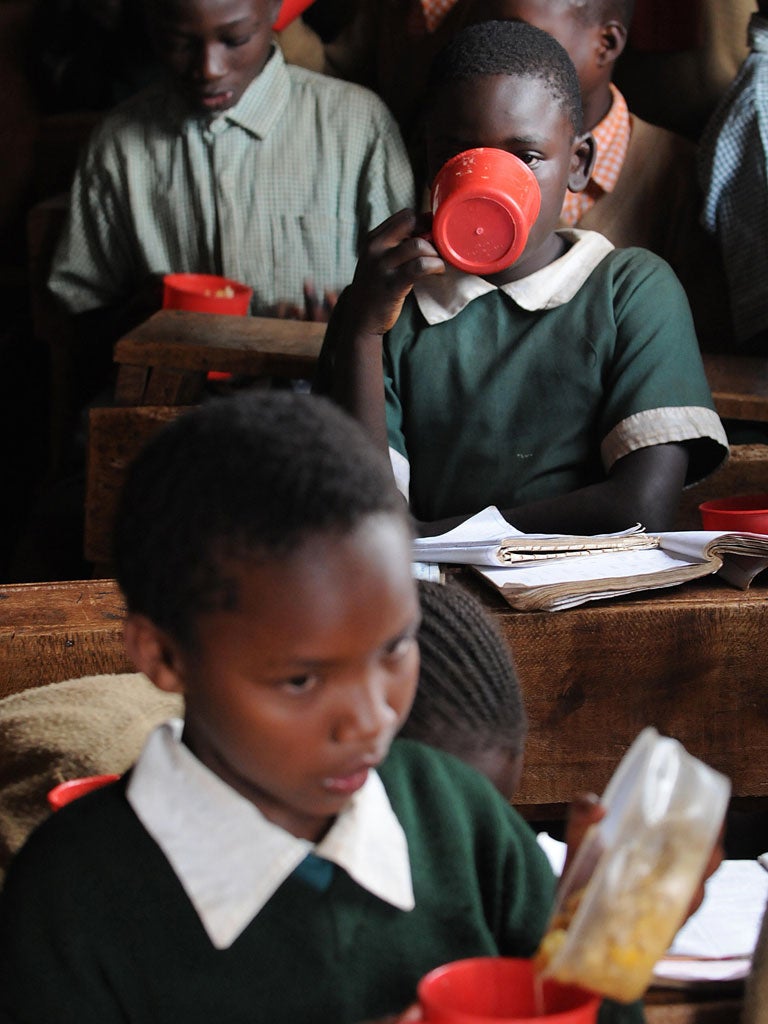Please, sir... Schoolchildren 'given smaller portions' to balance books

Your support helps us to tell the story
From reproductive rights to climate change to Big Tech, The Independent is on the ground when the story is developing. Whether it's investigating the financials of Elon Musk's pro-Trump PAC or producing our latest documentary, 'The A Word', which shines a light on the American women fighting for reproductive rights, we know how important it is to parse out the facts from the messaging.
At such a critical moment in US history, we need reporters on the ground. Your donation allows us to keep sending journalists to speak to both sides of the story.
The Independent is trusted by Americans across the entire political spectrum. And unlike many other quality news outlets, we choose not to lock Americans out of our reporting and analysis with paywalls. We believe quality journalism should be available to everyone, paid for by those who can afford it.
Your support makes all the difference.School meal portions are being shrunk, leaving children to go hungry, teachers and parents have warned.
Smaller portion sizes caused by cost-cutting are reported in schools across the country and are of particular concern, given the increase in the number of impoverished pupils who rely on school lunches as their only hot meal of the day. Primary-age children in particular are going hungry after being given lunches that are too small, according to teachers.
The findings of a study by the Association of Teachers and Lecturers were confirmed by individual teachers and parent groups who told i it was a growing problem. "Children are going hungry in schools and we all know what hunger does to your ability to learn," said Mary Bousted, the ATL's general secretary.
Figures from the School Food Trust show that the number of children eligible for free school dinners increased by 43,000 to an estimated 1,055,000 in 2010-11. More than a third of education staff have reported an increase in the take-up of free meals since 2007 – something that Ms Bousted said was "no surprise in the current economic climate."
In the ATL survey, teachers warned that private providers, who are often hired to supply school meals, were cutting portion sizes to make their budgets go further and win new contracts. "The younger children pay the same price but get much less than the older ones," said one reception class teacher in Bradford.
Margaret Morrissey, of the pressure group Parents Outloud, said it had received similar complaints from parents. "Providers would rather cut back on quantity than put up prices as they fear that would lose them the contract," she said. "Councils should monitor providers very closely."
Sixty-two per cent of teachers said meal prices had risen by up to 50p a day – or £95 extra a year – in some areas. A spokeswoman for the Association for Public Service Excellence, which monitors the school meals service, said the major costs for caterers were staffing and overheads and these would be targets for cuts rather than portion sizes. However, she added that government grants for school dinners were no longer ring-fenced and had been incorporated into schools' overall budgets, making the meals service less secure.
Join our commenting forum
Join thought-provoking conversations, follow other Independent readers and see their replies
Comments